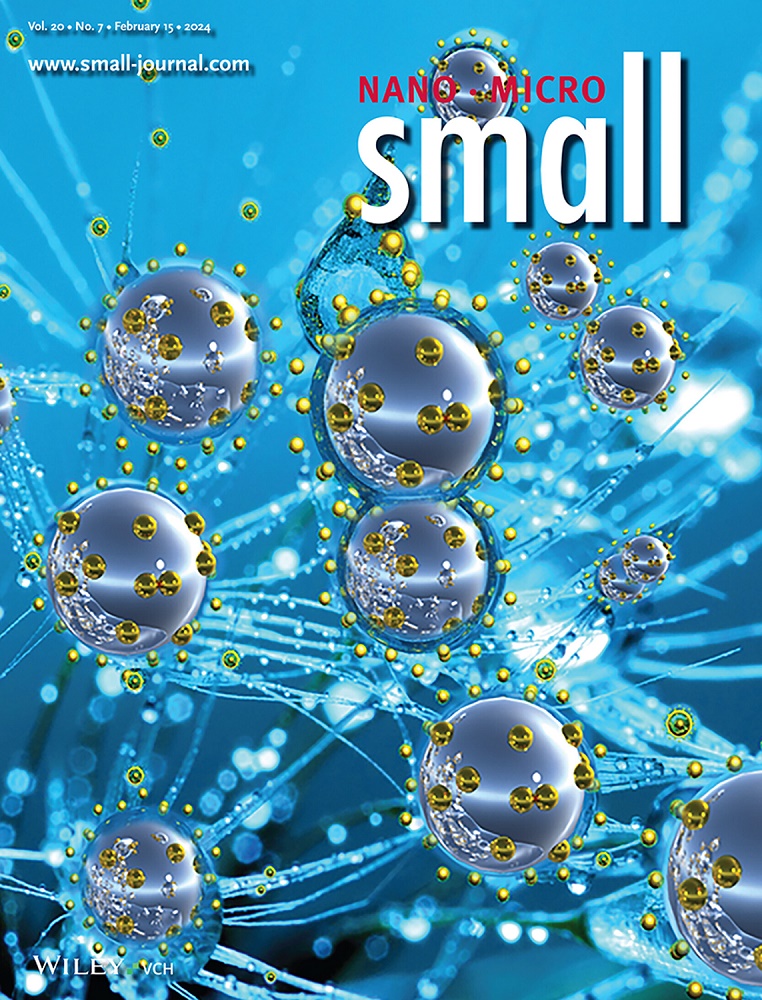磁各向异性和梯度诱导的Dzyaloshinskii - Moriya相互作用对磁性粒子形成的影响
IF 12.1
2区 材料科学
Q1 CHEMISTRY, MULTIDISCIPLINARY
引用次数: 0
摘要
拓扑自旋织构(例如,skyrmions)可以通过磁多层中的界面Dzyaloshinskii - Moriya相互作用(DMI)来稳定,这已经得到了深入的研究。最近,在10 nm厚的CoPt单层中观察到由成分梯度诱导的DMI (g - DMI)稳定的Bloch型磁天子。然而,梯度成分工程CoPt (g‐CoPt)薄膜的磁各向异性对相对Co/Pt成分和薄膜厚度都高度敏感,导致与g‐DMI的复杂相互作用。在磁各向异性和g - DMI共同作用下,skyrmions的稳定性至关重要,但人们对其了解甚少。在这里,我们使用磁力显微镜(MFM)、体磁强计和拓扑霍尔效应测量,系统地研究了g - CoPt单层(厚度为10-30 nm)中磁性天子作为梯度极性和有效梯度(定义为梯度/厚度)的函数的特性。布里渊光散射光谱证实了g - DMI的符号和大小取决于g - CoPt薄膜中成分梯度的极性和振幅。MFM显示,粒子的大小和密度随g - CoPt薄膜厚度、梯度极性和外加磁场的变化而变化。在具有较高磁各向异性的样品中观察到增加的skyrmion密度,这与微磁模拟和能量势垒计算一致。本文章由计算机程序翻译,如有差异,请以英文原文为准。
Effect of Magnetic Anisotropy and Gradient‐Induced Dzyaloshinskii‐Moriya Interaction on the Formation of Magnetic Skyrmions
Topological spin textures (e.g., skyrmions) can be stabilized by interfacial Dzyaloshinskii‐Moriya interaction (DMI) in the magnetic multilayer, which has been intensively studied. Recently, Bloch‐type magnetic skyrmions stabilized by composition gradient‐induced DMI (g‐DMI) have been observed in 10‐nm thick CoPt single layer. However, magnetic anisotropy in gradient‐composition engineered CoPt (g‐CoPt) films is highly sensitive to both the relative Co/Pt composition and the film thickness, leading to a complex interplay with g‐DMI. The stability of skyrmions under the combined influence of magnetic anisotropy and g‐DMI is crucial yet remains poorly understood. Here, we condcut a systematic study on the characteristics of magnetic skyrmions as a function of gradient polarity and effective gradient (defined as gradient/thickness) in g‐CoPt single layers (thickness of 10–30 nm) using magnetic force microscopy (MFM), bulk magnetometry, and topological Hall effect measurements. Brillouin light scattering spectroscopy confirms that both the sign and magnitude of g‐DMI depend on the polarity and amplitude of the composition gradient in g‐CoPt films. MFM reveals that skyrmion size and density vary with g‐CoPt film thickness, gradient polarity, and applied magnetic field. An increased skyrmion density is observed in samples exhibiting higher magnetic anisotropy, in agreement with micromagnetic simulations and energy barrier calculations.
求助全文
通过发布文献求助,成功后即可免费获取论文全文。
去求助
来源期刊

Small
工程技术-材料科学:综合
CiteScore
17.70
自引率
3.80%
发文量
1830
审稿时长
2.1 months
期刊介绍:
Small serves as an exceptional platform for both experimental and theoretical studies in fundamental and applied interdisciplinary research at the nano- and microscale. The journal offers a compelling mix of peer-reviewed Research Articles, Reviews, Perspectives, and Comments.
With a remarkable 2022 Journal Impact Factor of 13.3 (Journal Citation Reports from Clarivate Analytics, 2023), Small remains among the top multidisciplinary journals, covering a wide range of topics at the interface of materials science, chemistry, physics, engineering, medicine, and biology.
Small's readership includes biochemists, biologists, biomedical scientists, chemists, engineers, information technologists, materials scientists, physicists, and theoreticians alike.
 求助内容:
求助内容: 应助结果提醒方式:
应助结果提醒方式:


